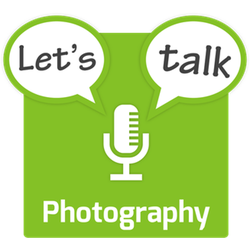Panel
- Bart Busschots (host) – @bbusschots – Flickr
In this solo show Bart shares his thoughts on where he would like to see the cameras in our phones continue to the evolve over the next few years. The cameras in phones have come a long way in the last decade, so what pain points remain? What opportunities are there for improvement?
While this podcast is free for you to enjoy, it’s not free for Bart to create. Please consider supporting the show by becoming a patron on Patreon.
Reminder – you can submit questions for future Q & A shows at http://lets-talk.ie/photoq
Show Notes
As I prepare this show we’re anticipating an Apple iPhone announcement event, and it’s a given there will be camera improvements. That got me thinking, given how far phone cameras have come, where do I see room for still more improvement?
-
More Zoom — I’ve had in 5x optical zoom for nearly a year now, and it’s noticeably better than the 3X I had before, but there are still times I need more. There is a limit to what it will be comfortable to hand-hold, but we’re not there yet so there’s still headroom here.
-
Less Noise — because of Apple’s powerful image processing pipeline I don’t see noise directly, what I see is the cartoonish look you get when the pipeline has to work too hard to suppress it. I still find myself throwing out images shot in poorer light because they look terrible, especially zoomed in macros at 2x & 5x. Even the best image signal processing can only do so much, so better sensors is what we need.
-
Bigger Sensors — depth of field is determined by many factors (more in LTP 71), but an important one is the size of the sensor. Bigger sensors give shallower depths of fields at the same focal length and aperture. This is why professional photographers still love their full-frame sensors! The bigger the sensor the less you need to zoom in or open the aperture to get an optical shallow depth of field. When you look at the Exif data of iPhone photos you notice surprisingly small apertures are now the norm, but with the image processing to simulate shallow DOF the images still have really deep focal ranges. Faking shallow DOF with AI is hit-and-miss, and I’m not banking on it getting better. Computing it from phase data like Apple does on more recent phones works much better, but it’s still frustratingly limited in my experience. A bigger sensor would give you a shallower DOF optically, and, it would give the computation engine more to work with when simulating even shallower depths.
-
More Automatic Modes — if you think back to even point and shoot digital cameras the most basic way we could assert control was with simple modes like Landscape, Sport, Macro, Portrait & Night. Apple already gives us some modes, including obviously portrait & night, but I want more!
- An explicit Macro mode (not the existing automatic one which we can only disable when it feels like showing up, but never summon ourselves)
- Silhouette mode — tell the camera to stop trying desperately to brighten the shadows and let them go black!
- Sport mode — focus on the moving figure and keep the exposure low. Modern AI could really work magic here!
-
Expert Mode — I’d love the built-in camera app to have a toggle to permanently enable some buttons that give me the kinds of controls I was used to when using my DSLR in semi-automatic modes.
- Metering modes — my single biggest ask is to be able to tell the camera what I want it to expose for. Right now the camera does the simplest thing, it tries to get the average exposure of the whole frame to be mathematically correct. This makes silhouettes really hard! Give me a control to flip from this default to center-weighted to spot, and show me the spot, and let me drag it around. I know you can sometimes get the iPhone built-in camera to weight the exposure a little by tapping on part of the scene, but it’s fiddly at best!
- Exposure compensation — on a related note, just some simple up/down toggles for the exposure in 1/3 EV would be great! Again, I know the built-in iPhone camera can adjust exposure if you tap, hold, and slide, but that’s beyond fiddly and into frustrating in my experience!
- Focus modes — another big ask from me would be some autofocus modes to let me tell the camera’s brain what I want it to focus on — the thing in the middle, the nearest thing, the thing that’s moving, and so on.
- Semi-automatic modes — let me tell the camera one thing on the exposure triangle, and leave the others to the camera. In other words, give me Aperture Priority & Exposure Priority!
-
Better & More hardware buttons — one of the things Nikon really got right was how much you could do with very few buttons. Most of the time I used just three — the shutter button with it’s half and full press modes, the +/- roller to control the aperture or shutter speed (depending on the semi-automatic mode), and the exposure compensation button to shift the roller to controlling the exposure compensation. I'd like to see camera phones give me a similar level of control:
- A True Shutter Button — don't just bring the action button from the Apple Watch to the phone, make it a two-mode button with a half-press
- Plus/Minus Button(s) — the volume buttons could take on the role of Nikon's roller, and move the aperture or exposure when in a semi-automatic mode (assuming we get something like that of course!). It doesn't have to be a button though, maybe it could be a swipe gesture on the shutter button, or a single rocking button. I don't really care how the concept of more and less gets translated to hardware, just provide a way, and plum it into some useful functionality in the camera app, and let developers of 3rd-party camera apps use it too.
- A modifier button (maybe) — depending on how a plus/minus input gets added, I might also want a modifier button to act like the exposure compensation button on my Nikons and effectively let the plus/minus control have two modes. In a world where we get semi-automatic modes like Aperture Priority and Shutter Priority the obvious use would be exposure compensation.


It’s hard to argue against convenience being a huge factor but, for me, I just cannot let go of all the other ones. Which is why I’ve spent far more on DSLR gear in the last 10 years than on phones. Plus, there is one factor you did not mention that is a huge negative for me on phones — ergonomics. Composing photos with a phone is like holding a fish using a slice of cheese. Taking the shot is like trying to kiss the fish.